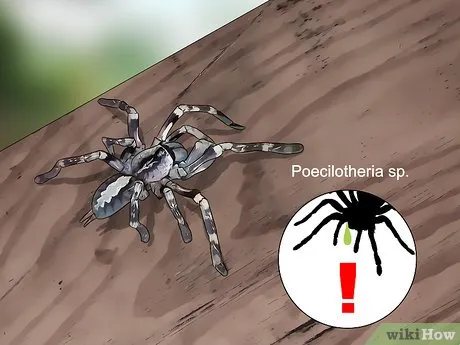Understanding Tarantula Behavior and Temperament
Before even considering picking up a tarantula, it’s crucial to understand their behavior and temperament. These arachnids are not social creatures and do not enjoy being handled. Each tarantula has its unique personality, but generally, they are more likely to flee or defend themselves rather than seek interaction. Their reactions vary significantly based on species, age, and individual disposition. Some tarantulas are docile and may tolerate brief handling, while others are extremely defensive and prone to biting or flicking urticating hairs. Understanding these tendencies is the first step in ensuring both your safety and the well-being of the spider. Always observe your tarantula’s behavior in its enclosure for signs of stress or aggression before attempting any interaction.
How Tarantulas React to Handling
Tarantulas may react to handling in several ways. Some may remain still, seemingly accepting the situation, while others may exhibit warning behaviors such as raising their front legs, exposing their fangs, or flicking urticating hairs. These hairs are a defense mechanism that can cause intense skin irritation. Some tarantulas may try to escape by quickly moving away, and if cornered, they might bite. Bites from tarantulas are generally not life-threatening to humans but can be painful, causing localized pain, swelling, and discomfort. Understanding these potential reactions will help you anticipate the spider’s behavior and prepare accordingly.
Factors Influencing a Tarantula’s Disposition

Several factors influence a tarantula’s disposition. The species of tarantula is a primary determinant; some species are known to be more docile than others. The spider’s age and size also play a role, with younger tarantulas sometimes being more skittish. The environment they live in, including temperature, humidity, and the availability of hiding places, affects their comfort level. A well-cared-for tarantula housed in a comfortable environment is generally less stressed. Stress, such as a lack of proper care or frequent handling, can make a tarantula more defensive and likely to bite. Observing these factors allows you to make informed decisions about when and how to interact with your tarantula.
Preparing to Handle a Tarantula
If, after careful consideration, you decide to handle your tarantula, proper preparation is essential. This involves assembling the necessary safety gear and selecting the appropriate time and environment. Handling a tarantula is not a casual activity, and should only be considered if you are comfortable with the risks involved. Always prioritize the spider’s well-being and your safety. Never handle a tarantula unless you are fully aware of its species-specific characteristics and potential defensive behaviors. Being prepared will help minimize stress for both you and the tarantula.
Essential Safety Gear
The most critical piece of safety gear is a pair of long, sturdy gloves that cover your hands and forearms. These will protect you from bites and urticating hairs. Consider wearing a long-sleeved shirt and pants to cover as much skin as possible. Have a soft surface, such as a table covered with a blanket, available in case the tarantula falls. Always handle the tarantula over this surface to minimize the risk of injury. Keep a first-aid kit handy for potential bites, with antiseptic wipes and pain relievers. It’s also a good idea to have a container nearby to safely return the tarantula to its enclosure if it becomes agitated.
Choosing the Right Time and Environment
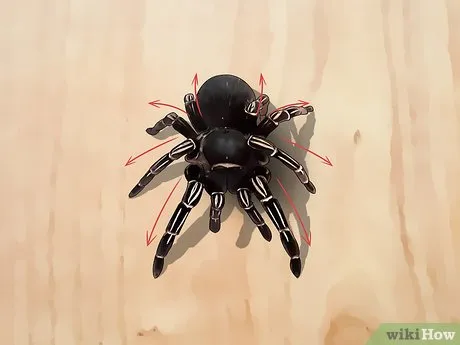
Select a time when the tarantula is calm and has been undisturbed for a while. Avoid handling them right after feeding, during molting, or when they are visibly stressed. A quiet room with minimal distractions is the best environment. Close doors and windows to prevent escape. Ensure the temperature and humidity levels in the room are similar to those in the tarantula’s enclosure. Adequate lighting is also important, but avoid direct, harsh light that might stress the spider. Handling should be brief and controlled, allowing the tarantula to return to its enclosure as quickly as possible.
Step-by-Step Guide to Picking Up a Tarantula
Handling a tarantula requires a calm, deliberate approach. Rushing or making sudden movements can startle the spider and increase the likelihood of a defensive reaction. Always observe the tarantula’s behavior and be prepared to stop the process at any moment if the spider shows signs of stress or aggression. Handling should be kept to a minimum. If you are unsure or uncomfortable, it is best not to handle the tarantula at all.
Approach and Initial Contact
Approach the tarantula slowly and speak in a calm voice. Avoid making any sudden movements or loud noises. Gently position your gloved hand near the tarantula, allowing it to become familiar with your presence. Do not try to grab or force the spider. Let the tarantula move onto your hand on its own accord. If the tarantula shows any signs of aggression, such as raising its front legs or exposing its fangs, immediately retreat and do not attempt to pick it up.
Proper Lifting Technique
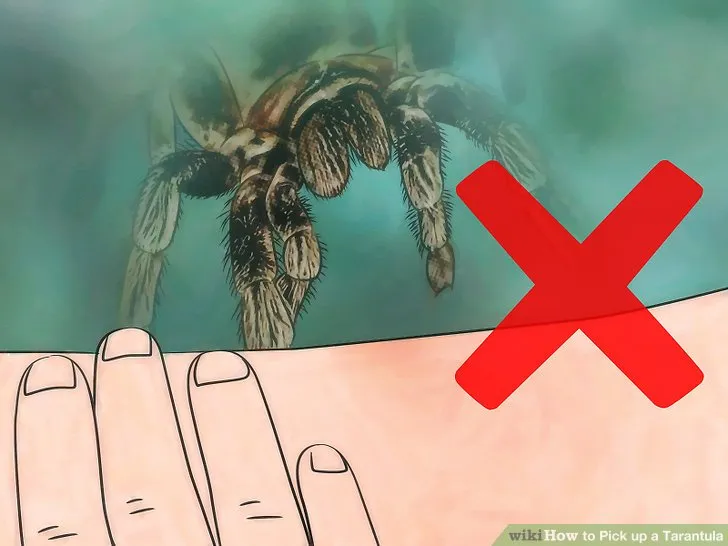
Once the tarantula is on your hand, gently lift it, making sure to support its body. Do not squeeze or grip the tarantula. Keep your hand close to the soft surface in case it falls. Always use both hands to support the tarantula’s weight, ensuring that it feels secure. Avoid tilting your hand at an angle that might cause the tarantula to lose its balance and fall. Move slowly and deliberately, avoiding any sudden movements that could startle the spider.
Supporting the Tarantula’s Weight
Tarantulas have fragile bodies, and supporting their weight properly is crucial to prevent injuries. Use both hands to cradle the spider, providing a stable platform. Make sure your fingers are spread out to distribute the weight evenly. Be aware of the tarantula’s position and adjust your grip as needed to keep it balanced. If the tarantula starts to move, gently shift your hand to maintain its support. A well-supported tarantula is less likely to become stressed or try to escape.
Things to Avoid When Handling a Tarantula
Certain actions can significantly increase the risk of injury to both you and the tarantula. Being aware of these pitfalls is essential for safe and responsible handling. Remember, the primary goal should always be to minimize the stress placed on the spider and to ensure your safety. If you’re unsure about anything, it’s always better to err on the side of caution and not handle the tarantula.
Sudden Movements and Loud Noises
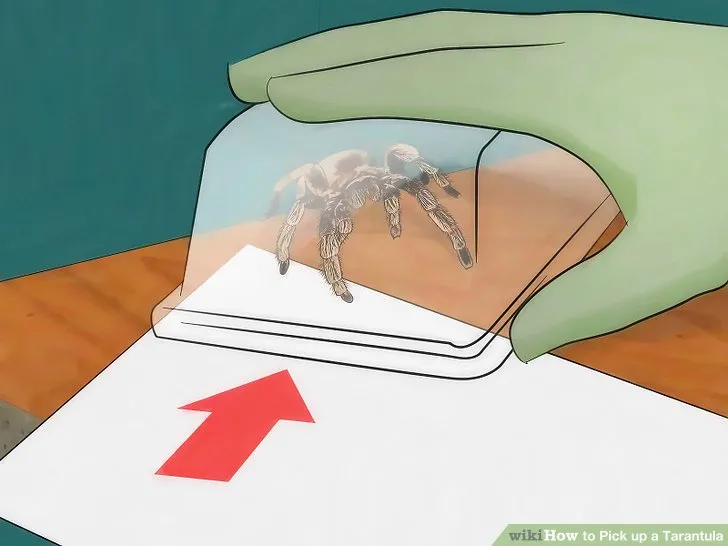
Tarantulas are sensitive to sudden movements and loud noises, which can startle them and trigger a defensive response. Avoid making any abrupt gestures or unexpected sounds while handling the spider. Move slowly and deliberately, keeping your movements smooth and predictable. If something unexpected happens, such as a loud noise, immediately stop what you are doing and assess the situation. Give the tarantula time to calm down before resuming. Keeping your environment and movements calm is essential to a positive handling experience.
Dropping or Injuring the Tarantula
One of the most critical things to avoid is dropping or otherwise injuring the tarantula. Tarantulas are fragile creatures, and a fall can cause severe injuries, including damage to their exoskeletons or internal organs. Always keep your hand close to a soft surface, such as a table covered with a blanket. If the tarantula starts to fall, try to gently guide it onto the surface rather than attempting to catch it. Never handle a tarantula if you are feeling clumsy or distracted. A fall can be fatal, so extreme caution is paramount.
Post-Handling Care and Observation
After handling your tarantula, it is important to conduct a thorough check to ensure both the spider’s well-being and your safety. Even a brief handling session can be stressful for the tarantula, so it is important to ensure it returns to its enclosure without harm. Observing your tarantula after handling will help you better understand its response to interaction.
Checking for Any Injuries
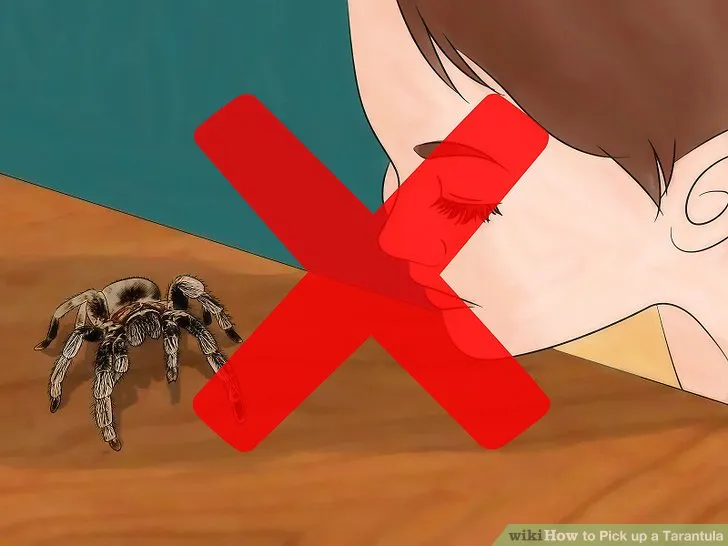
Carefully inspect the tarantula for any signs of injury. Look for damage to the exoskeleton, such as cracks or dents. Check its legs and pedipalps for any abnormalities. Observe its behavior for any signs of stress or distress. If you notice any injuries, consult with a veterinarian specializing in exotic animals or a knowledgeable tarantula keeper. Promptly address any issues to prevent further complications.
Returning the Tarantula to Its Enclosure
Once you’ve completed your inspection, gently return the tarantula to its enclosure. Place your hand near the entrance of its habitat and allow the spider to walk back in on its own. Avoid forcing it. Make sure the enclosure is secure and there are no escape routes. Observe the tarantula’s behavior for the next few hours to ensure it is comfortable and has settled back into its environment. This helps ensure the spider is not unduly stressed by the handling and prevents potential escapes. Ensure the enclosure has all the necessary resources (water, food, and shelter) the spider needs.
